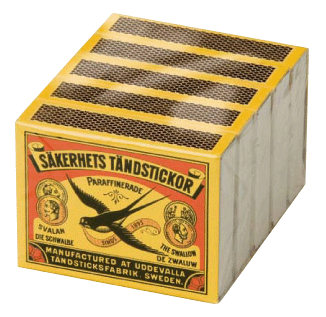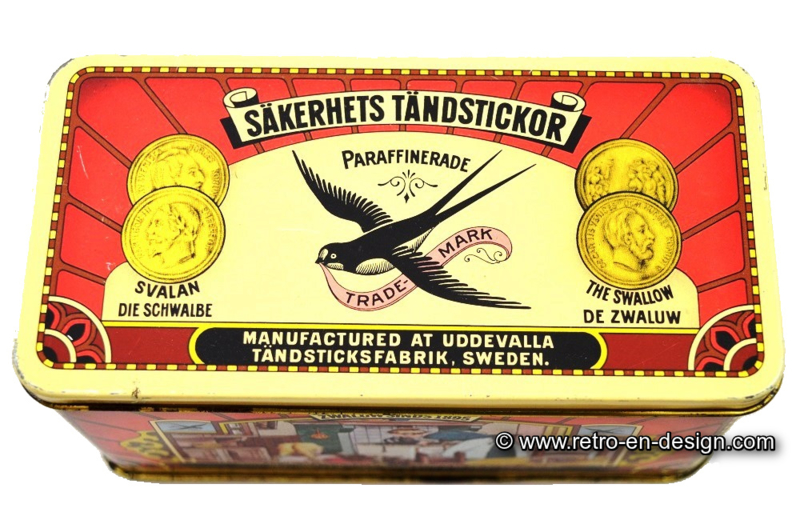A R C H I V E
Vintage matchbox tin The Swallow "Säkerhets Tändstickor" sinds 1895
SKU: 1207Vintage Matchbox tin The Swallow "Säkerhets Tändstickor".
Rectangular tin for matchboxes by "The Swallow". With four old rhymes on the sides in Dutch and with domestic scenes, Säckhets Tandstickor, Sweden. 'Zwaluw sinds 1895'.
Anneke haalt hout voor het fornuis, moeder strijkt een “Zwaluw” aan, want het is koud in huis.
Pijpje gestopt niet meer getobd. Een “Zwaluwtje” erbij en Gerrit is weer blij.
Tante Agaath heel net weet wel hoe je koffie zet. Met een “Zwaluw” elke keer. “Kwaliteit en goede sfeer”.
Is het ’s winters koud en guur, gezellig voor het open vuur. Een “Zwaluw” zonder verzuim, zorgt dan voor de goede luim.
- Height: 8,1 cm.
- Length: 15,9 cm.
- Width: 7,7 cm.

A match is a tool for starting a fire. Typically, modern matches are made of small wooden sticks or stiff paper. One end is coated with a material that can be ignited by frictional heat generated by striking the match against a suitable surface. Wooden matches are packaged in matchboxes, and paper matches are partially cut into rows and stapled into matchbooks. The coated end of a match, known as the match "head", consists of a bead of active ingredients and binder; often colored for easier inspection. There are two main types of matches: safety matches, which can be struck only against a specially prepared surface, and strike-anywhere matches, for which any suitably frictional surface can be used. Some match-like compositions, known as electric matches, are ignited electrically rather than from friction.
The idea of creating a specially designed striking surface was developed in 1844 by the Swede Gustaf Erik Pasch. Pasch patented the use of red phosphorus in the striking surface. He found that this could ignite heads that did not need to contain white phosphorus. Johan Edvard and his younger brother Carl Frans Lundström (1823–1917) started a large-scale match industry in Jönköping, Sweden around 1847, but the improved safety match was not introduced until around 1850–55. The Lundström brothers had obtained a sample of red phosphorus matches from Arthur Albright at The Great Exhibition, held at The Crystal Palace in 1851, but had misplaced it and therefore they did not try the matches until just before the Paris Exhibition of 1855 when they found that the matches were still usable. In 1858 their company produced around 12 million matchboxes.





















